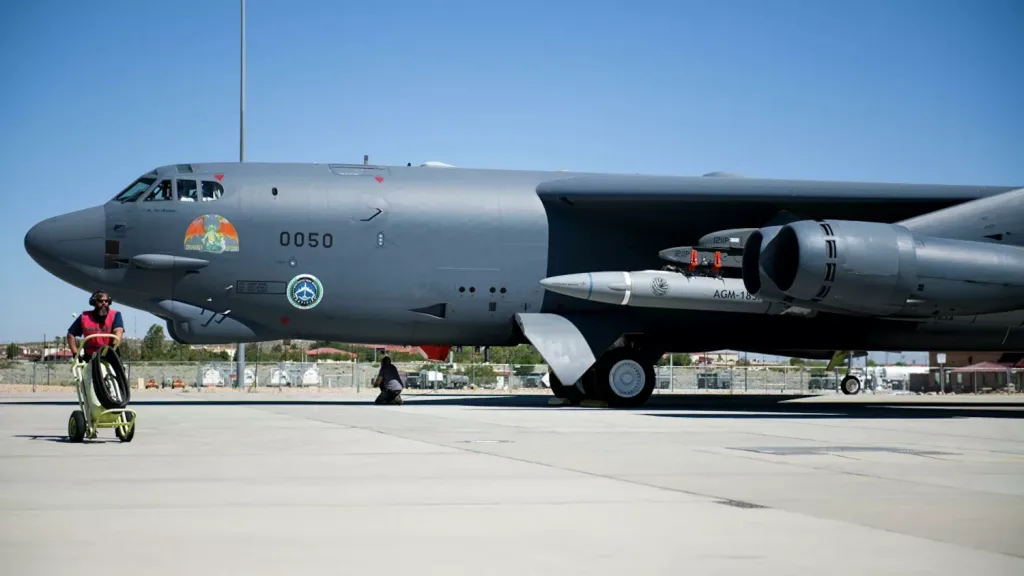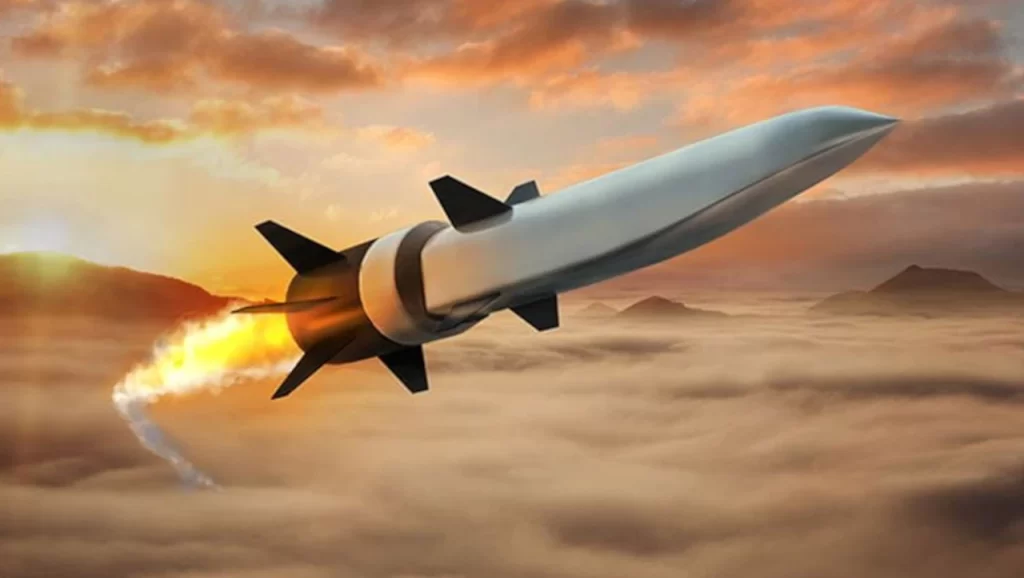According to the Congressional Research Service Report 08.07.2024, the United States has been actively developing hypersonic weapons since the early 2000s as part of its Prompt Global Strike Program.
In recent years, efforts have been concentrated on developing hypersonic glide vehicles and hypersonic cruise missiles with lesser and intermediate ranges for use in regional conflicts. The Pentagon and Congress are demonstrating an increasing interest in the short-term deployment and continued development of hypersonic systems, even though funding for these programs was relatively modest in the past. This is partly due to advancements in these technologies by Russia and China, leading to heightened US attention to the strategic threat posed by hypersonic flight. Reports indicate that both China and Russia have conducted numerous successful tests of hypersonic glide vehicles and are likely to have operational capabilities.
Experts disagree on the potential impact of competitors’ hypersonic weapons on strategic and tactical objectives, stability, and the competitive advantage of the US armed forces. However, former Under Secretary of Defense for Research and Engineering Michael Griffin testified to Congress that the United States has no systems that could adequately threaten China and Russia, and we have no defense against their systems.
The S. McCain National Defense Authorization Act for Fiscal Year 2019 accelerated the development of hypersonic weapons, which was identified as a priority research and development area. The United States is unlikely to deploy an operational system before the 2025 fiscal year.
However, most US hypersonic weapons programs, unlike those in Russia and China, are not intended for potential nuclear warhead use.

US hypersonic weapons are likely to require greater precision and will be more complex to develop than China’s and Russia’s nuclear-armed systems.
Section 247 of the FY 2019 NDAA mandated the Secretary of Defense to conduct a classified evaluation of US and adversary hypersonic weapons. This assessment, carried out in collaboration with the Intelligence Community, examined various aspects of hypersonic technology development, including spending on research and development, the quality and quantity of research efforts, the test infrastructure and workforce, technical progress, and projected timelines for operational deployment.
Until recently, it was believed that the United States was not considering the development of nuclear-armed hypersonic missiles. However, a recently withdrawn Air Force request proposed ideas for a “thermal protection system capable of supporting hypersonic glide over intercontinental ballistic missile ranges.” Senior Department of Defense officials responded to news reports by denying this, stating that the US Department of Defense “remains committed to the non-nuclear role of hypersonic technology.”
There are two main categories of hypersonic weapons. Hypersonic glide vehicles are launched with a rocket and then glide towards their destination. On the other hand, Hypersonic cruise missiles are powered by high-speed air-breathing engines or scramjets that allow them to reach their target.
Unlike ballistic missiles, hypersonic weapons may maneuver as they travel to their objective. General John Hyten, former Vice Chairman of the Joint Chiefs of Staff and former Commander of US Strategic Command, stated that hypersonic weapons could provide responsive, long-range strike options against distant, protected, and/or time-sensitive threats (such as mobile missiles) when other forces are unavailable.
Hypersonic weapons can challenge detection and defense systems due to their speed, maneuverability, and low flight altitude. For example, ground-based radars may not detect hypersonic weapons until the late stages of their flight.
At a minimum, the United States, Russia, China, Australia, India, France, Germany, and Japan are developing hypersonic weapons technologies.
When hypersonic glide vehicles are combined with a rocket booster, the resulting weapon system is often referred to as a hypersonic glide weapon.
Technological Programs for Hypersonic Weapons
US Navy
Conventional Prompt Strike (CPS)
According to the Navy’s FY 2025 budget documents, the service intends to deploy CPS on Zumwalt-class destroyers by the end of FY 2025. Navy officials previously noted plans to achieve “limited operational capability” on Ohio-class submarines by 2025 and on Virginia-class submarines by FY 2028.
Offensive Anti-Surface Warfare Increment 2 (OASuW Inc 2)
Also known as Hypersonic Air-Launched OASuW (HALO).
US Army
Long-Range Hypersonic Weapon (LRHW)
Also known as Dark Eagle, this program is expected to pair a conventional glide vehicle with a Navy booster system. It is designed to have a range of over 2,700 km and provide the Army with a prototype strategic strike system to counter A2/AD (anti-access/area denial) capabilities, suppress enemy fire at long range, and strike other high-value/time-sensitive targets. The Army has fielded LRHW prototype equipment and intends to deploy two additional LRHW batteries by FY 2027.
US Air Force
AGM-183 Air-Launched Rapid Response Weapon (ARRW)
The ARRW (pronounced “arrow”) was intended to use DARPA’s Tactical Boost Glide (TBG) technology to develop an air-launched hypersonic vehicle capable of traveling at average speeds of Mach 6.5 to 8, over a range of approximately 1,600 m. The first test of a fully functional ARRW prototype in December 2022 was successful.
Hypersonic Attack Cruise Missile (HACM)
Launched in FY 2022, the Air Force requested $517 million for HACM in FY 20 5. The Air Force is also developing a disposable hypersonic multi-mission air-breathing vehicle as part of a demonstration program known as Project Mayhem—a hypersonic unmanned bomber capable of flying at Mach 10 and conducting both strike and reconnaissance missions.
The USAF may have to choose between these two projects.
DARPA’s Tactical Boost Glide (TBG)
In partnership with the Air Force, DARPA tested the wedge-shaped hypersonic weapon—a glide vehicle capable of flying at speeds over Mach 7—to develop and demonstrate technologies for air-launched tactical-range hypersonic glide systems. TBG is also considered for compatibility and integration with the Navy’s vertical launch system. It is intended for both the Air Force and the Navy. DARPA did not request funds for FY 2025, declaring the program “complete.”

DARPA’s Operational Fires (OpFires)
TBG technology is needed to develop a ground-based system that enables modern tactical weapons to penetrate adversary air environments and strike critical targets quickly and accurately. OpFires completed its first flight tests on July 20 2. The OpFires program ended in FY 2022.
Hypersonic Air-breathing Weapon Concept (HAWC)
DARPA, in collaboration with the Air Force, developed and demonstrated crucial technologies to enable a successful and economical air-launched hypersonic cruise missile. HAWC was successfully tested in March and July 2022, as well as January 2023, with launches from a B-52 bomber.
Former Principal Director for Hypersonics Mike White stated that hypersonic cruise missiles like HAWC would be smaller than hypersonic glide vehicles and could be launched from a wider range of platforms.
DARPA did not request funds for MOHAWC in FY 2025, describing the program as “complete.”
Glide Breaker
DARPA is also working on a Glide Breaker program, which “will develop critical component technology to support a lightweight vehicle designed to engage hypersonic threats precisely at very long ranges.” In FY 2025, DARPA requested $38 million for Glide Breaker.
Global Hypersonic Weapons Programs of US Allies
The Hypersonic International Flight Research Experimentation (HIFiRE) initiative, which was initiated in 2007, has been a collaborative effort between the United States and Australia to advance hypersonic technologies. The most recent HIFiRE test, which was successfully concluded in July 2017, examined the flight dynamics of an aircraft. Scramjet technology and a hypersonic glide vehicle capable of flying at Mach 8 were the subjects of previous tests. The Southern Cross Integrated Flight Research Experiment (SCIFiRE) program, which succeeded HIFiRE, aims to advance the development of hypersonic air-breathing devices.
Since the 1990s, France has been investing in the research of hypersonic technology; however, it has only lately disclosed its intentions in this field. The V-max program involved the adaptation of France’s supersonic air-to-surface missile ASN4G for hypersonic flight. The updated missile underwent successful tests in June 2023. Some observers believe that the V-max program aims to give France strategic nuclear hypersonic weapons. France has five hypersonic wind tunnels that can test speeds of up to Mach 21.

Germany successfully tested the SHEFEX II, an experimental hypersonic glide vehicle, in 2012. As part of the European Union’s ATLAS II initiative, DLR, a German defense contractor, is researching and testing hypersonic vehicles. The project aims to create a missile to achieve Mach 5-6. Germany has three hypersonic wind tunnels that can test speeds as high as Mach 11.
Since 2018, South Korea has been developing Hycore, a ground-launched hypersonic cruise missile capable of speeds greater than Mach 6.
Japan is developing both a hypersonic cruise missile (HCM) and a hypervelocity glide projectile (HVGP). According to reports, Japan aims to use the HVGP to suppress enemy territory and disable aircraft carriers. The supersonic HVGP is projected to go into service in 2026, with a more advanced hypersonic version available in FY 2030. The HCM is projected to be operating by 2030. Mitsubishi Heavy Industries and the University of Tokyo are the sites of two additional hypersonic wind tunnels in addition to the three operated by the Japan Aerospace Exploration Agency. According to the Ministry of Defense, Japan and the United States have agreed to conduct a collaborative analysis aimed at future collaboration in hypersonic defensive technologies.
Questions for Congress
As Congress oversees the United States hypersonic weapons programs, it may seek information on the Department of Defense’s assessment of potential miss on sets for these weapons, the associated costs, and the availability of alternative means to accomplish similar goals. Additionally, Congress may inquire about the enabling technologies, such as space sensors or autonomous control and management systems, necessary for the effective use or defense against hypersonic weapons.
Strategic Stability
Analysts hold differing views on the strategic implications of hypersonic weapons. Some argue that the short deployment time and unpredictable trajectory of these weapons increase the risk of miscalculation or unintended escalation in a conflict, particularly for countries with joint nuclear and conventional capabilities. Additionally, the uncertainty surrounding the type of warhead and the difficulty in distinguishing between conventional and nuclear hypersonic weapons may contribute to unintended escalation.
